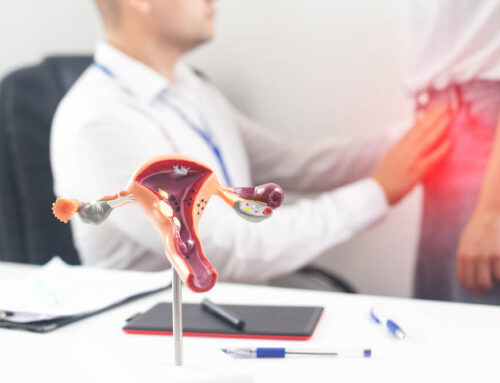A LEEP procedure, i.e., a loop electrosurgical excision procedure, is an approach used to test and remove any abnormal tissue and cells found on your cervix after a positive Pap smear test or problematic colposcopy results.
The procedure’s name comes from the medical instrument the doctor uses and the way the tool functions. There is a wire loop at the end of the instrument, and by using electricity, the loop is heated up to remove particular problematic cells on the cervix or the vagina.
After removing the tissue, it is usually sent for testing to determine whether the patient has precancerous or cancerous cells. This means that LEEP surgery can help in early diagnostics and prevention of cervical cancer.
If you need advice on this topic, make sure you do your research on OBGYN care in Boca Raton, FL. Feel free to contact Women’s Healthcare Partners and schedule a consultation to find out what options are available to you.
Why Have a LEEP?
As mentioned above, the primary reason women undergo cervix surgery of this kind is by recommendation from their chosen medical physician after a positive Pap smear or a problematic colposcopy. LEEP procedure can also be advised if the doctor detects something unusual in the vagina or when you have genital warts or polyps. Generally, the loop electrosurgical excision procedure is used to treat any cells that might become cancerous or cause issues later on.
Before a LEEP surgery, consult your doctor and have them explain the reasoning behind this decision, the likely results, the risks and benefits, alternative options, and so on.

The Procedure Explained
Although pretty simple and brief, the LEEP procedure does demand some prior preparation. Firstly, your doctor will determine whether you suffer from any conditions that might complicate the procedure and prevent you from getting it. It is impossible to do this surgery if there are active cervix and pelvis inflammations. Also, the patient needs to get a pregnancy test so the doctor can determine the right timing for this procedure.
The ideal time to have this cervix surgery is one week after your period finishes, meaning you cannot have it while you are menstruating. Some additional advice includes:
- Do not have intercourse 24 hours before the procedure
- Avoid vaginal creams and douching the day before the surgery
- Have a pad ready to wear after the surgery for vaginal discharge
- Take some painkillers half an hour before the procedure
- Do not take aspirin or anticoagulants before the procedure because they affect the way your blood clots
- Dress lightly, so you can easily remove your clothes
LEEP surgery is most often done at a doctor’s office or a clinic. The procedure begins when the patient lies on the examination table and puts the legs in the stirrups, just like with any other gynecological examination. A pad is placed on the thighs of the patient to protect them from the electricity. The doctor uses a speculum to open the vaginal walls and reach the cervix.
To make the abnormal cells as visible as possible (make them white), the doctors use an acetic acid solution which they add to the cervix. Be aware that this might cause a burning sensation. Afterward, an instrument called a colposcope is placed near the vaginal opening to magnify the cervix. The device used looks like a microscope, and it is not inserted into the body at any point during the surgery.
Medical professionals use local anesthesia to numb the cervix, and when it is injected, you might feel some tingling in the tongue or ringing in the ears. This lasts only for a short while, so do not panic. After the cervix has been numbed, the doctor will insert a loop made of wire, which is electrically charged, through the speculum to reach your cervix.
The patient needs to be perfectly still for the doctor to remove the tissue successfully. By passing the loop across the cervix, layers of tissue are cut, and abnormal cells are removed. After the tissue is cut away, it is sent for testing in a laboratory.
In the final phase of the LEEP procedure, the doctor stops the bleeding by putting a paste (an iron solution paste) on the treated area. After this, the surgery is officially done.
The whole procedure does not take longer than 20 minutes; the patients can usually go home right afterward. Lie down for at least half an hour so the doctor can monitor your condition. There shouldn’t be much bleeding after the surgery, but the medication can cause vaginal discharge and spotting.
When it comes to pain levels during a loop electrosurgical excision procedure, it entirely depends on the sensitivity of the patient. There are different phases of the surgery where pain might be present such as:
- You might feel a pinch when the doctor injects the anesthetic into the cervix.
- You might feel a burning sensation when the vinegary solution is applied to the cervix.
- You can feel pressure and discomfort when the cells are being cut.
- You can feel lightheaded or faint.
- Cramping is also a possible occurrence during this procedure.
LEEP Procedure Recovery
Regarding the LEEP procedure recovery, we are bringing you here a list of steps and advice you should take after undergoing LEEP surgery:
- The recovery period lasts from four to six weeks.
- You can continue with your everyday activities after a few days.
- Avoid: douching, tampons, sexual intercourse, heavy lifting, and too much physical activity.
- Choose your pain medication wisely because some of them cause more bleeding.
- Get a lot of rest after the surgery.
- Expect cramps and spotting for a few days.
- A green-yellow or dark brown vaginal discharge might occur for a few weeks after the surgery. This can be managed by wearing a pad daily.
- Wait to start exercising for at least a week after a LEEP.
- Sexual intercourse should be avoided for at least a month after the procedure.
- Avoid taking baths until the doctor allows it (you can shower).
In case you experience heavy bleeding, bleeding which contains clots, a very smelly vaginal discharge, fever, or severe pains in the abdomen, contact your doctor as soon as possible.

Advantages and Risks of a LEEP
Regardless of how short and simple a surgery is, it always carries certain risks. In the case of a LEEP procedure, the risks include:
- Infections
- Heavy bleeding
- Scars on the cervix
- Issues with pregnancy afterward
- Problems with premature labor (due to a weakened cervix)
When it comes to advantages, they include:
- An effective way to prevent cancer of the cervix
- The success rate of the LEEP is 90%
- Short, almost risk-free surgery
- Easy removal of genital warts and polyps
- Simple recovery process
Consult Our Experts!
Having issues with cancerous cells in the body is not pleasant or comfortable for our patients. The team of experts in our clinic is experienced and trained to deal with different situations when it comes to cervical and other types of cancer. Feel free to reach out to us and consult our experts about the LEEP procedure, amongst many others that we offer. We are here for you!





